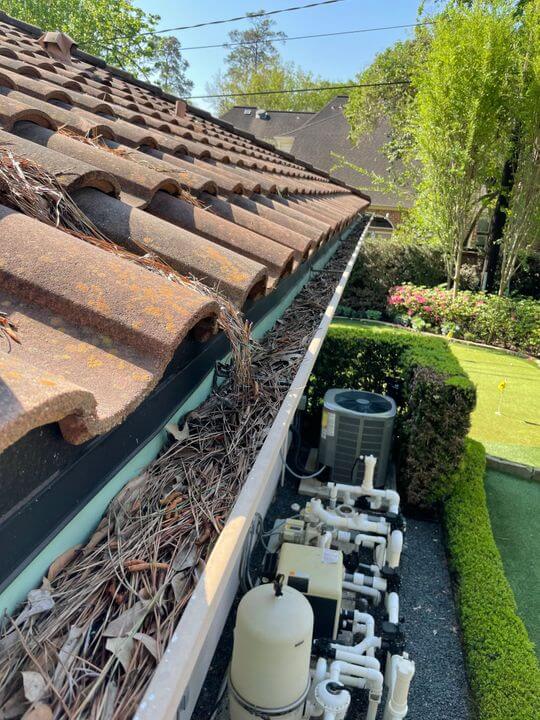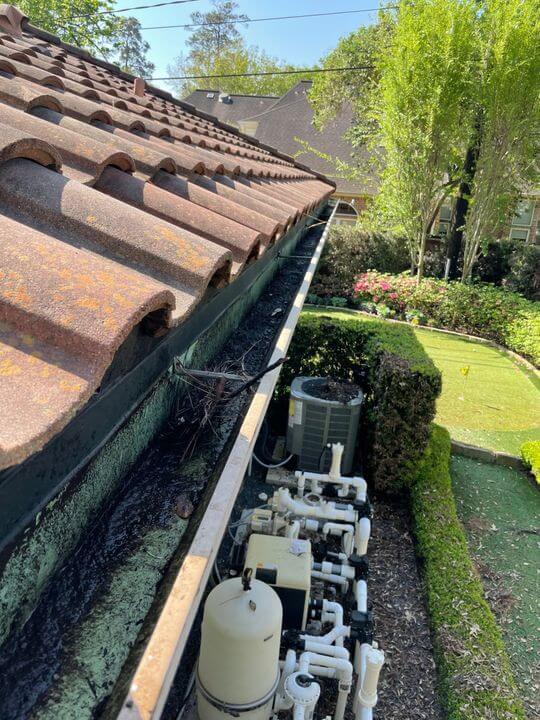Everything You Need to Know About Gutter Clean Out
Are you fed up with dealing with clogged, overflowing gutters in your home? Gutter cleaning can be a daunting task but it doesn’t have to be! Gutter clean out is an important part of any homeowner’s regular maintenance routine and now there are easy steps you can take to get the job done quickly. This blog post will cover everything from understanding why it’s necessary to DIY cleanout methods that help keep your gutters flowing without the headache. Knowing how often to do cleanouts, what tools you need for the job, and different techniques for getting rid of those leaves and dirt in your gutters – this guide has it all. So if you want an updated workflow background information for cleaning out those pesky rain spouts – read on!
Reasons for Gutter Clean Out
Keeping your gutters clean and clear of debris is crucial for several reasons. Primarily, gutters are designed to divert rainwater away from your home’s foundation. When they’re filled with leaves, twigs, and other debris, they can’t perform this function effectively, potentially causing water to pool around your home’s foundation. Over time, this can lead to significant damage, including foundation weakening, basement flooding, or even structural instability.
Also, clogged gutters can become a breeding ground for pests, such as mosquitoes, which thrive in stagnant water. They can also contribute to the growth of mold and mildew, which can pose health risks for those living in the home.
Lastly, overloaded gutters can sag and pull away from the house, leading to costly repairs. In winter, ice dams can form in clogged gutters, creating further damage to your property. Therefore, regular gutter clean out is not just a chore but a necessary step in maintaining the integrity and value of your home.

Clogged Gutters
Types of Gutter Cleaning
There are several types of gutter cleaning methods that homeowners can employ, each with its own set of advantages and disadvantages.
- Hand Cleaning: This traditional method involves removing debris from the gutters by hand. While this method can be labor-intensive, it allows for a thorough cleanout and is ideal if the gutters are heavily clogged.
- Leaf Blower Cleaning: A leaf blower can be used to clean gutters, and it’s a quicker method than hand cleaning. However, it can be messy as it tends to blow leaves and dirt around. This method is most suitable for gutters with light to moderate debris.
- Wet/Dry Vacuum Cleaning: A wet/dry vacuum can be used for gutter cleaning. This method is clean and efficient but may require special attachments to reach the gutters. It’s best for cleaning gutters with dry debris.
- Power Washer Cleaning: A power washer can effectively clean gutters, especially ones with stubborn dirt and grime. However, this method should be used with caution to avoid damaging the gutters. It’s recommended for gutters with hard-to-remove debris.
- Professional Gutter Cleaning: Hiring a professional gutter cleaning service is another option. Professionals have the necessary equipment and expertise to do the job effectively and safely. This method is recommended for those who prefer not to do the job themselves or have hard-to-reach gutters.
Choosing the best method for cleaning your gutters largely depends on the amount and type of debris in your gutters, as well as your comfort and ability in doing the task yourself. Remember that regardless of the method chosen, regular gutter cleaning is vital to maintaining the health of your home’s infrastructure.
Preparing for Gutter Clean Out
Before you start your gutter clean out, it’s crucial to familiarize yourself with the necessary tools. The tools you’ll need for this task may vary depending on the cleaning method you choose, but some basic tools are universally useful:
- Ladder: An extendable ladder is an essential tool for reaching your gutters. Ensure it’s sturdy and secure before climbing.
- Gloves: Thick, durable gloves will protect your hands from sharp debris and potential bacteria in the gutters.
- Gutter Scoop: This special scoop is designed to remove debris from your gutters efficiently. Alternatively, a small handheld garden trowel would work too.
- Bucket or Trash Bags: Use these to collect and dispose of the gutter debris. A bucket can be attached to your ladder for convenience.
- Garden Hose with Spray Attachment: This is useful for washing out smaller debris and checking the gutters and downspouts for any blockages.
- Safety Glasses and Dust Mask: These provide protection against dust and other airborne particles during the cleaning process.
If you choose to use a leaf blower, wet/dry vacuum, or power washer method, you’ll need to have these tools on hand as well. Be sure to read the user manuals thoroughly and understand how to safely operate these tools before use.
Step-by-Step Instructions for Cleaning Your Gutters
- Safety First: Before you start, ensure you’re wearing all the necessary protective gear, including gloves, safety glasses, and a dust mask. Make sure your ladder is sturdy and secure before you start climbing.
- Remove Loose Debris: Start at the end of the gutter opposite the downspout. Use your gutter scoop or handheld trowel to remove larger debris (leaves, twigs, etc.) from the gutter. Dispose of this debris in your bucket or trash bags.
- Use Your Chosen Cleaning Method: Depending on the method you’ve chosen (hand cleaning, leaf blower, wet/dry vacuum, or power washer), use your tools to remove the remaining debris from the gutters. Remember to start from the side opposite the downspout, working your way towards it.
- Check the Downspouts: Once the gutters are clean, direct the water hose towards the downspouts to flush them out. If water doesn’t flow freely, there may be a blockage. In this case, you can use a plumber’s snake to clear the downspout.
- Final Inspection: After cleaning, inspect your gutters for any signs of damage. Look for cracks, leaks, or loose gutter sections. If you find any problems, you may need to consider repair or replacement.
Remember, gutter cleaning should be conducted at least twice a year, in the spring and fall. However, if you live in an area with lots of trees, you may need to clean your gutters more frequently. Regular gutter maintenance can help prevent costly home repair bills in the future.

Cleaned Gutter
Common Issues And Troubleshooting Tips During Gutter Cleaning
- Blocked Downspouts: Quite often, the downspouts become congested with leaves, twigs, and other debris. In such cases, a plumber’s snake or a piece of stiff wire can be used to unclog them. If the clog is stubborn, disassembling the downspout might be necessary.
- Gutter Damage: If you notice any cracks, holes, or rust in your gutters, these should be fixed immediately to prevent further damage. Small holes can be patched using a gutter sealant, while larger ones may require a patching kit available at home improvement stores.
- Loose Gutters: Loose gutters can lead to inefficient water drainage. If the gutters are sagging or pulling away from the house, you might need to replace the hangers or tighten the existing ones.
- Water Pooling: This could be caused by a blockage or the gutter not being leveled correctly. If your gutters are clean and you still notice water pooling, you may need to adjust the slope of the gutters so that water can drain towards the downspouts.
Always remember, if a problem seems too complex or risky to handle on your own, don’t hesitate to hire a professional for gutter cleaning. Safety should always be your top priority.
In conclusion, gutter cleaning is an important task that should be done regularly to maintain your home’s infrastructure. It’s better to clean gutters yourself or have them cleaned by a professional service than leave them clogged with debris and allow water damage to occur due to poor drainage. Though it may seem like a tedious job, regular gutter maintenance can save you from costly repairs down the road.
https://www.google.com/maps?cid=5944598836063304007

Recent Comments